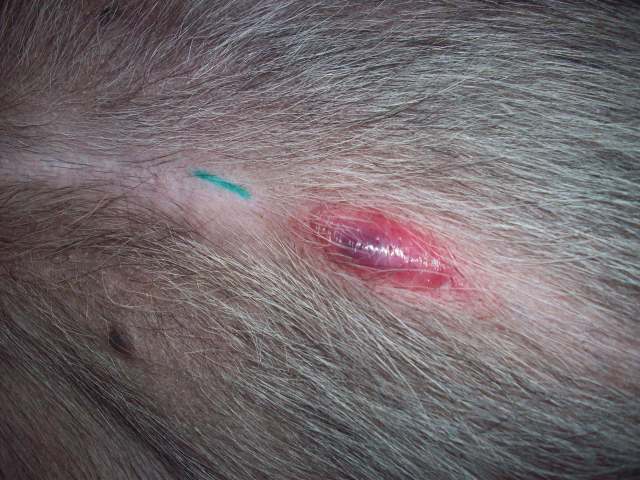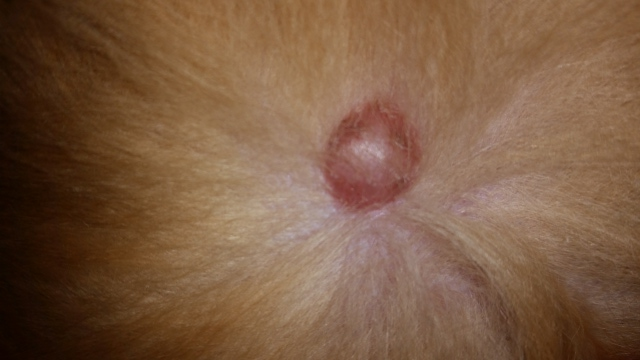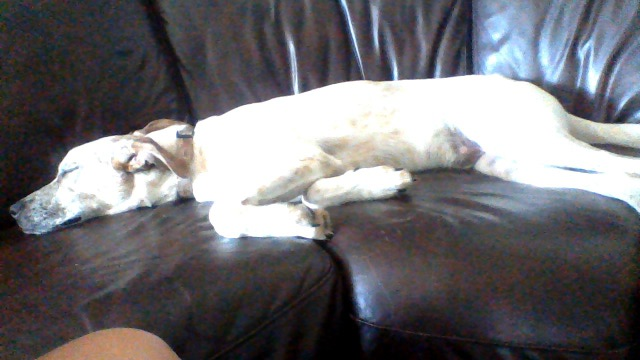QuestionWhile two of my three kittens seem to be developing just fine, one of them is growing much slower than the others. Tonight I discovered three 1 & 1/2 inch brown leeches that I believe to have come from my kitten. Sam is acting nervous and anxious and is shying away from us, this is unusual behavior for such a loving kitten. We've recently treated all three of the cats with a worming medicine from our vet. We're thinking that the medicine is working, but we're not sure what caused the development of the leeches to begin with. I'll contact my vet tomorrow, but I've been unable to find anything on-line to help me understand what kind of parasites these are or how I can treat the kitten or keep them from getting the leeches. Any thoughts or suggestions?
Thank you,
Zachary Schreiber & Sam
AnswerI have never seen leeches on a cat, and I would find it odd for them to be on her. I am wondering if it is a warble? ( see the tidbit below ) I would recommend taking the specimens to the vet to confirm, and have your vet examine the kitten for any skin lesions.
Bot Fly and Larva
The bot fly lays its eggs on most animals fur while sleeping and when the grub emerges, it climbs to a favorable spot and burrows into and under the skin. It may travel for a long distance under the skin - in a moose it typically enters at the leg and reaches the shoulders before it cuts a breathing hole and starts to develope. It is then called a warble and can grow as large as an inch long on even a small cat or squirrel. A special fluid is discharged by the warble to prevent the breathing hole in the skin from being closed by the host!
The tell tale breathing hole in the pets skin easily identifies its presence, once it has grown large enough for you to notice the lump below the skin. Looking closely at the hole you will see the tail end or breathing tube of the warble. Cats tend to clean themselves of the eggs very well but can not reach their neck area, so most often they appear there. While disgusting to look at or think about, they do no real harm but some vets remove them by surgery.
I have allowed a few to run their course and emerge on their own, at which time the body easily closes the wound. Later, I tried colloidal silver applied hourly and the breathing hole enlarged enough in a day to easily squeeze the warble out, while the size of a small bean. KittenSafe should work even better, with the essential oils aggrivating the warble. Like any grub or maggot, they can contract to a ball shape or elongate like a worm and thus easily emerge thru the hole.

 What is this sore?
Question
Sore
Just noticed this sore on my dogs belly t
What is this sore?
Question
Sore
Just noticed this sore on my dogs belly t
 Soft pink blister looking on dogs side
Question
Blister on Golden Retr
I noticed a smal
Soft pink blister looking on dogs side
Question
Blister on Golden Retr
I noticed a smal
 Young male, female and newborn kits
QuestionQUESTION: Greetings,
I have a stray male and a
Young male, female and newborn kits
QuestionQUESTION: Greetings,
I have a stray male and a
 dog breathing heavily through nose
Question
Camo Camo
Hello, I have a male Am
dog breathing heavily through nose
Question
Camo Camo
Hello, I have a male Am
 Bloody Hair Ball
Question
My Little Girl
My indoor cat vomited up a very
Bloody Hair Ball
Question
My Little Girl
My indoor cat vomited up a very